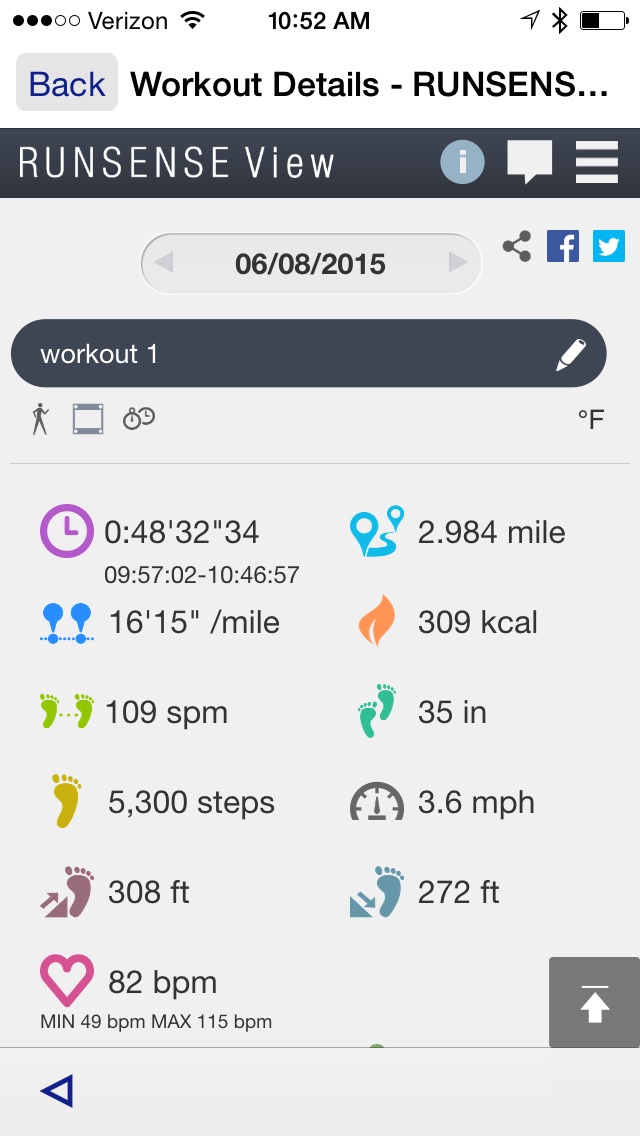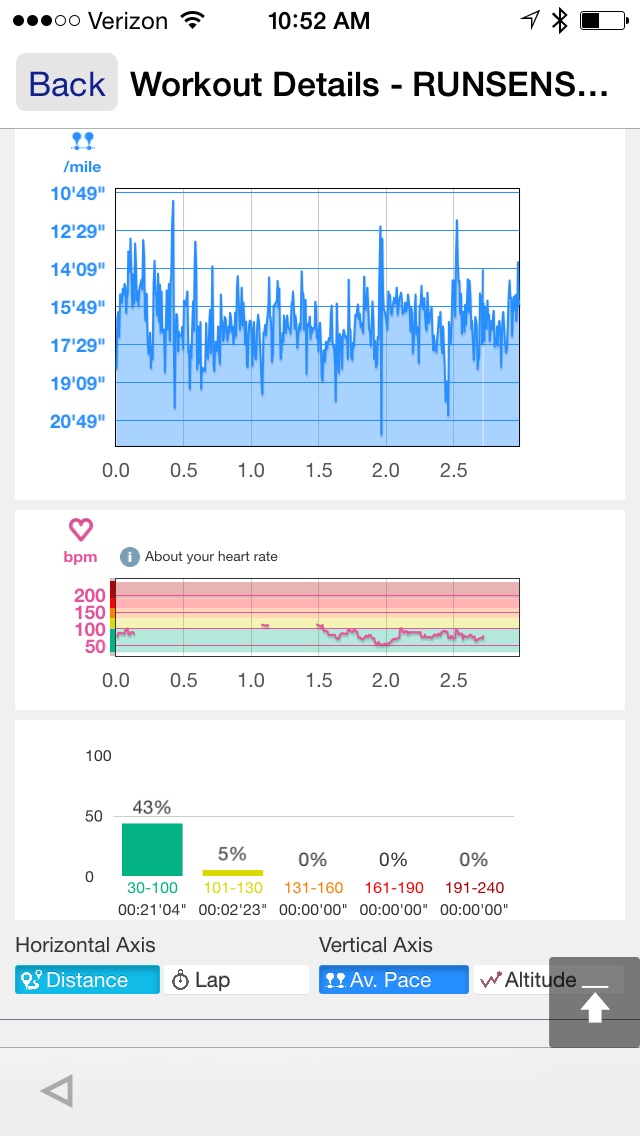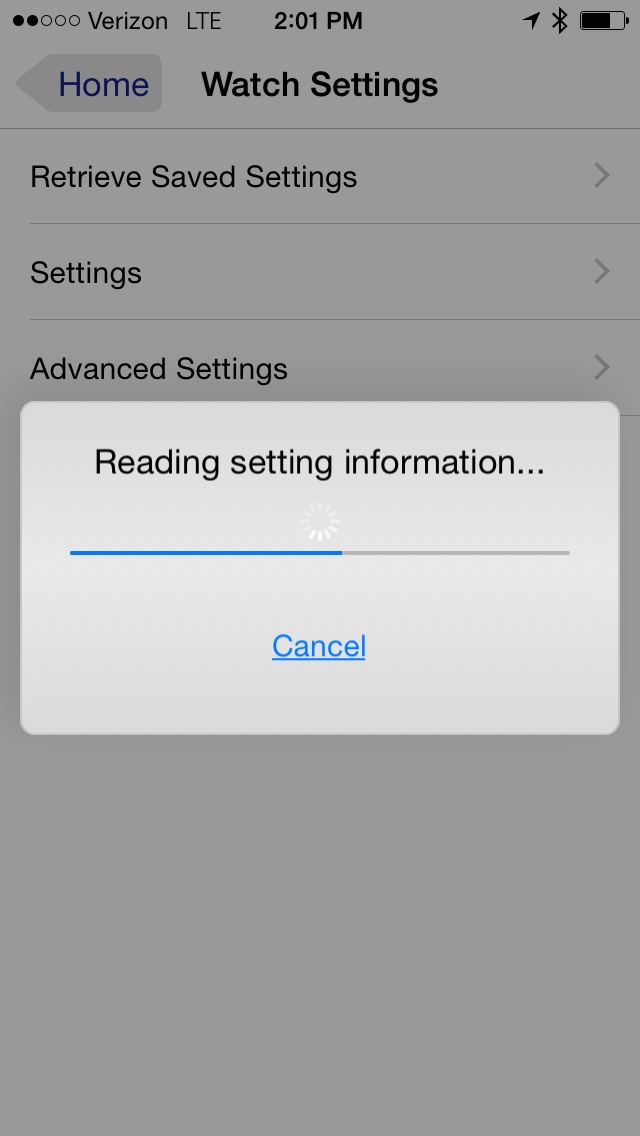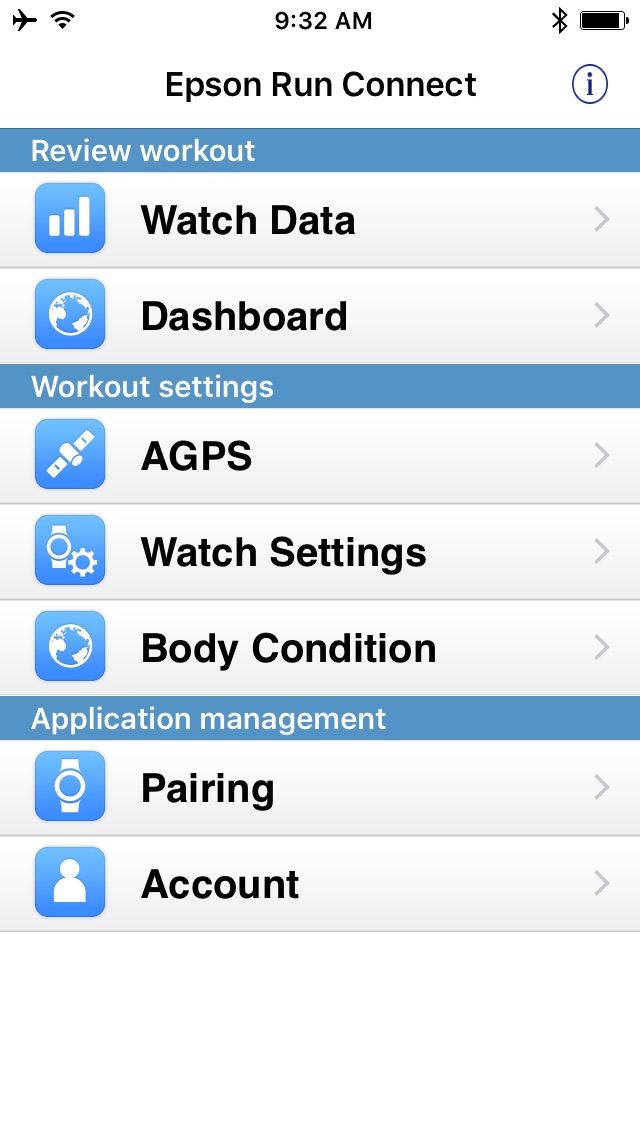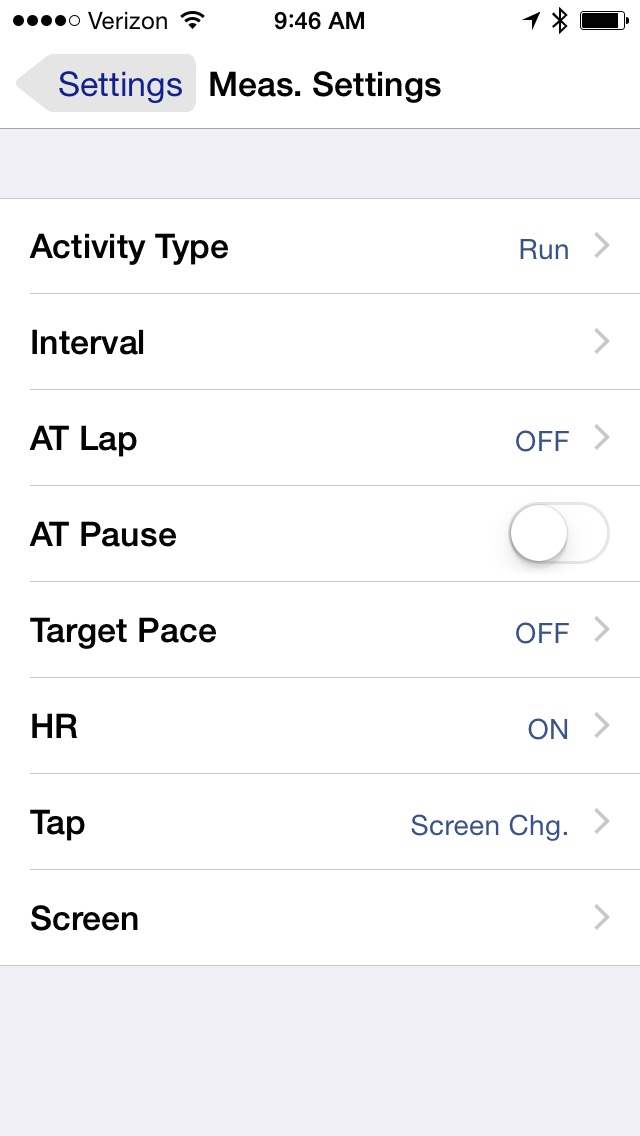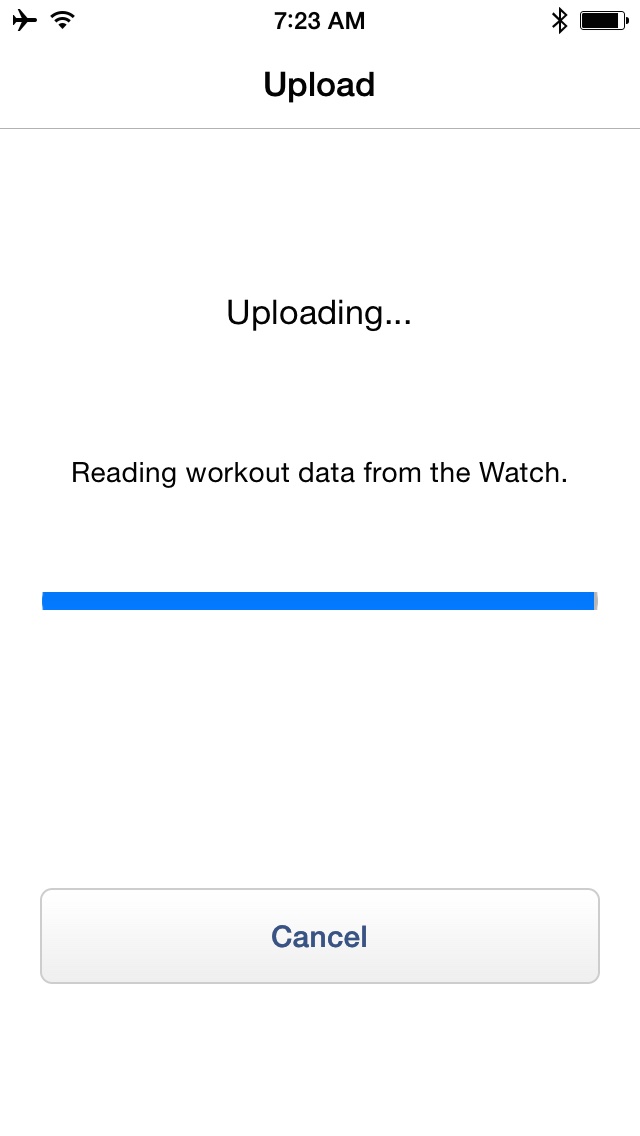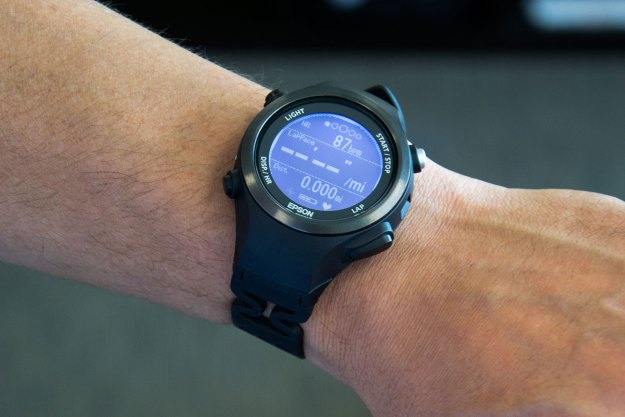
“Epson’s FS-810 comes light on features, heavy and price, and somehow still manages to confuse.”
- Monitors heart rate
- Water resistant to 50 meters
- Vibration alarm
- Tappable watch face to switch screens
- Customizable interval training settings
- Button functions are confusing
- No daily step tracking
- No smart notifications
- No daily alarm
- Cheap plastic feel
Epson is not the first brand that comes to mind when thinking of wearable fitness technology. Projectors? Sure. Flatbed scanners, yes. Printers, of course. But GPS running watches with built-in heart monitoring? With the release of the Runsense FS-810, the answer is now yes.
While the Epson brand is best known for office technology, the company is not new to wrist-based timekeeping. Epson, or as it is more officially known Seiko Epson, has been manufacturing watches in Japan for over 90 years and building clocks for more than 100 under the brand Seiko. So while this fitness watch may be new to us, making watches is not new to Epson.
Features and design
In an era of sleek smart bands and space-age fitness bangles, the Epson FS-810 looks like a throwback to the inexpensive, round-faced digital watches of the ‘90s. It has an almost utilitarian, Timex-style design that underplays its high-tech innards. Its banner features are built-in GPS and an optical heart rate monitor, which takes the place of a more typical chest-strap monitor. It comes in only two colors, which match its low-style vibe: black and black with a touch of violet.
The waterproof case of the FS-810 features four buttons — two on each side. On the face, it displays the time in the middle third of the monochrome LCD screen with the day, date, and battery charge level beneath it. Because the watch is made of plastic, it feels light and a bit on the cheap side. Lightweight is good. It is a running watch after all. It is not, however, a watch that might accidentally be worn to a formal dinner.
But running is what the FS-810 does. In fact, it has no other fitness tracking features built in – not even step tracking. And though heart rate can be checked randomly throughout the day be pressing the lower left button, it only records data during a measured run.
The watch pairs to the Epson Run Connect smartphone app via Bluetooth, however, it does not automatically connect in the background to upload runs, nor can it deliver smart notifications, text, or emails to your wrist. The Epson Runsense FS-810 is a Bluetooth-enabled GPS running watch that should not be mistaken for either a smartwatch or a fitness tracker.
What’s in the box
The Epson SF-810 we tested arrived with the watch, a USB charging cradle, a quick start guide, and information sheet.
Performance and use
Setting the FS-810 is straightforward. The first time you turn it on, it takes you through settings and personal information questions like preferred language, miles vs. kilometers, and body specifics like weight. To calibrate the GPS and set the time, you need to take it outside. There is no way to manually set the time, but you’ll still need to know whether it’s daylight savings time or not, because the satellites don’t care. We had to move through the watch setting screens several times before finally getting the time right.
Pairing the FS-810 with Epson’s Runsense View was a little more complicated. You need to put the watch in its charging cradle, connect it to the Run Connecct app (for Windows or Mac OS X), and sign up for an account on Epson’s website. Then you’ll need to get the app on your phone (iOS or Android), turn on the phone’s pairing feature, and connect to the watch from the app.
Fortunately, tracking is far simpler. Starting a run requires pressing the upper right button once to find the GPS satellites. This usually took a while — between 40 seconds to a minute. Once the GPS synced, we pressed the same button once more to begin tracking the run. During the run, you can choose from four different data screens. The first screen shows heart rate, pace, and distance (our favorite); the second displays a split and lap time; the third shows heart rate, altitude, and time of day, the fourth screen displays heart rate and stride. All four of the screens can be customized via the Run Connect app, thought we didn’t feel the need to.
Switching between the data screens was easy thanks to the Runsense’s tap screen. By whacking the face of the watch with a free hand, the display changes from one data set to the next; no need to hunt for a button.
After our first run, we discovered the downside to the Epson FS-810. First, the Epson Run Connect is not a full-featured smartphone app as much as a utility for controlling settings on the watch and uploading activities to the Runsense View website. We’re used to fitness and running watches that do most of their app syncing in the background, however, the Epson Runsense doesn’t do anything without being asked, and it’s tedious. Uploading metrics from our first run required a staggering seven-step process:
- Stop the run by pressing the upper right button.
- Open the Run Connect app on the phone.
- Place the watch in Bluetooth sync mode by holding the lower right button until hearing a beep.
- Tap on the “watch data” menu item on the Run Connect app.
- Wait for the run title to upload from the watch to the phone.
- Tap on the most recent run.
- Tap the “upload” button at the bottom of the screen.
Then, and only then, did the run upload to the Runsense View website. Miss any one of those steps (as we did several times) and you’re in for some frustrating error messages. It reminded us of those times in the office when someone needed a printed document in an hurry and the printer just didn’t seem to be functioning. Eventually, we got it working, but it was not easy. Uploading a run using a home computer was much easier, however: just plug the USB charging cradle into the computer and launch the Run Connect App.
After viewing the metrics generated by our first test run it was obvious that the watch is a capable training device. It listed the regulars like distance, speed, pace, heart rate and time, but also included the number of steps and even a couple metrics we’ve never seen before like stride length and steps per minute. It even broke elevation down into how many feet we climbed and descended as two different metrics. Runners who nerd out on that kind of detail will enjoy the Runsense View website.
One of the watch’s more interesting features are interval-training options that can be set up and saved quite easily on the Epson Run Connect smartphone app.
One of the watches more interesting features are the interval-training options that can be set up and saved quite easily on the Epson Run Connect smartphone app (or manually on the phone). You can program intervals for either distance or time, and associate them with a targeted heart-rate zone. These settings can be saved, named, and then written to the watch. While running intervals, the watch will send an alert if the target heart rate is not reached or exceeded. It all works, but pressing four buttons close to 15 times before starting a run can get annoying, especially when the functions of those buttons seems to change with each data screen. At a certain point, it seemed like it would be easier to just run the intervals the old-fashion way by watching distance, heart rate and time on the watch.
Thankfully, the FS-810 works with other apps. The Runsense View website can be set to automatically upload activities to popular fitness tracking websites like Strava, MapMyFitness, and RunKeeper. And that’s key for people who already share their runs with friends on those platforms. Setting the data to share with other websites required a one-time trip to the Runsense View Settings section where we chose the “linked apps” menu item (it’s at the bottom). There we found a list of apps that could be linked. From then on, when we completed a run and uploaded it to Runsense View, it also appeared on the linked site as well.
Conclusion
The DT Accessory Pack
Up your game and the get the most out of your gear with the following extras, hand-picked by our editors:
ASICS Men’s Gel Kayano 21 Running Shoe ($120 and up)
ASICS Men’s 2-N-1 Woven Shorts ($9.38 and up)
Under Armour Men’s Shadow 2.0 Cap ($15 and up)
We liked what the FS-810 does, but we just kept wishing it could be easier to interact with.
Sure, it records all the metrics automatically, but using that data means manually pairing the phone and manually choosing update after each run. And, though we tried, we never got a real handle on the watch’s four buttons. We found their functions confusing, and the menus difficult to navigate even after we learned which button to press. Unlike some of its competitors, this Bluetooth-enabled fitness watch offers no smart text, email, or call notifications.
If it were priced at $150, the FS-810 would be a solid running watch for people who had other watches to wear for daily use. But for $350, the Epson FS-810 is underwhelming when compared competing watches from Garmin or Fitbit. These days, even running watches need to do more than track runs if they expect to stay on people’s wrists.
Highs
- Monitors heart rate
- Water resistant to 50 meters
- Vibration alarm
- Tappable watch face to switch screens
- Customizable interval training settings
Lows
- Button functions are confusing
- No daily step tracking
- No smart notifications
- No daily alarm
- Cheap plastic feel




